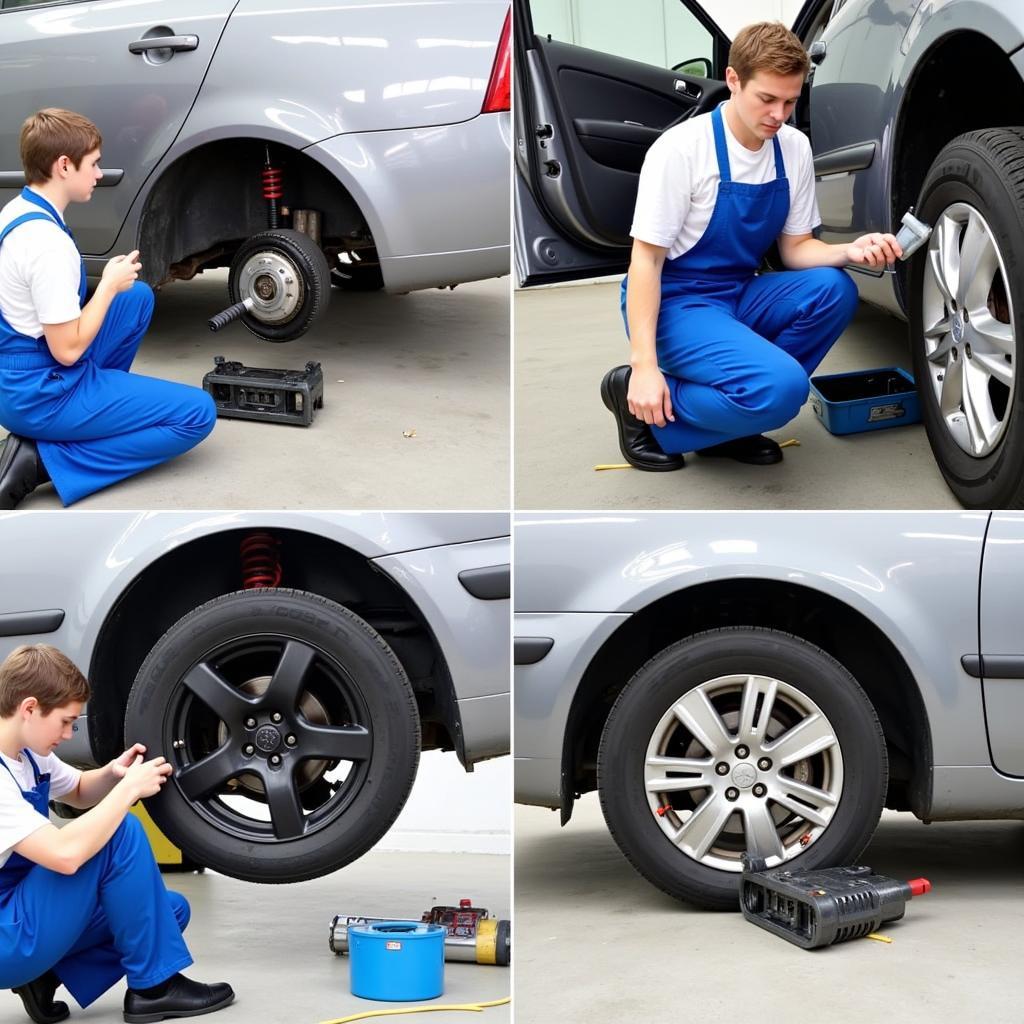Undercoating your car seems like a smart move against rust, but it’s not always a smooth ride. Many car owners find themselves dealing with unexpected problems with undercoating cars, from improper application to hidden rust and even voided warranties. This comprehensive guide will delve into the common pitfalls of car undercoating, empowering you to make informed decisions and avoid costly mistakes.
Understanding Undercoating and its Purpose
Why do people undercoat their cars in the first place? It’s primarily a preventative measure against rust, especially in areas with harsh winters and road salt. Undercoating acts as a barrier, shielding the undercarriage from moisture, salt, and other corrosive elements. However, problems can arise if the application isn’t done correctly or if the wrong type of undercoating is used. For example, some undercoatings can trap moisture, exacerbating rust rather than preventing it. Is rust a problem on cars in the midwest? Absolutely, and undercoating is often seen as a solution, but it’s important to understand the potential downsides.
Common Problems with Undercoating Cars
Several issues can stem from undercoating, and being aware of them can save you headaches down the road.
Improper Application Leading to Trapped Moisture
One of the most common problems with undercoating cars is improper application. If the undercarriage isn’t properly cleaned and prepped before application, the undercoating can trap moisture against the metal. This trapped moisture creates a perfect breeding ground for rust, negating the very purpose of the undercoating. Think of it like wrapping a damp piece of metal in plastic – it will rust faster than if it were left to air dry.
Masking Pre-Existing Rust Issues
Another issue is that undercoating can mask existing rust. A fresh coat can make a rusty undercarriage look pristine, hiding the problem from unsuspecting buyers or even from car owners themselves. This can lead to more extensive damage down the line, as the rust continues to spread beneath the seemingly protective layer. Chicago car rust problems are notorious, and while undercoating might seem like a quick fix, it can actually make things worse if applied over existing rust.
Voiding Manufacturer Warranties
Believe it or not, some undercoating applications can void your manufacturer’s warranty, particularly if it interferes with the vehicle’s drainage system or other components. Always check your warranty terms before applying any aftermarket undercoating. You might be surprised to learn about the restrictions on modifications, even seemingly harmless ones like undercoating. Problems with gm cars in coastal areas often involve rust, and while undercoating might seem like a good solution, it’s crucial to ensure it doesn’t impact your warranty.
Difficulty in Inspecting for Rust
Once undercoated, inspecting the car’s undercarriage for rust becomes more challenging. The coating obscures the metal, making it difficult to spot developing rust issues. This can delay necessary repairs and potentially lead to more extensive damage. Does northern europe have salt car rust problem? Yes, and undercoating is common there, but regular inspections are still vital, even with the coating.
Choosing the Right Undercoating and Application
If you decide to undercoat your car, careful selection and application are crucial. Opt for a reputable product and a qualified professional for the application.
- Rubberized Undercoating: This type offers excellent protection but can be prone to trapping moisture if not applied correctly.
- Wax-Based Undercoating: Easier to apply and less likely to trap moisture, but may not be as durable as rubberized options.
- DIY vs. Professional Application: DIY can save money but requires meticulous preparation and application. Professional application ensures proper coverage and minimizes the risk of problems.
“The biggest mistake people make with undercoating is rushing the preparation process. A clean, dry surface is absolutely essential for effective and problem-free undercoating.” – John Miller, Automotive Engineer
Maintaining an Undercoated Car
Even with proper undercoating, regular maintenance is key. Inspect the undercarriage periodically for any signs of peeling, cracking, or trapped moisture. Cars with least rust problems often benefit from meticulous maintenance, regardless of undercoating.
“Don’t just assume that undercoating is a one-time fix. Regular inspections and touch-ups are essential for long-term protection.” – Maria Sanchez, Automotive Technician
Conclusion
While undercoating can offer protection against rust, it’s essential to be aware of the potential problems with undercoating cars. By understanding the common issues, choosing the right product and application method, and maintaining your undercoated vehicle properly, you can maximize the benefits and minimize the risks. For further assistance or expert advice on car maintenance and repair, connect with AutoTipPro at +1 (641) 206-8880 or visit our office at 500 N St Mary’s St, San Antonio, TX 78205, United States. We’re here to help you keep your car in top condition.





Leave a Reply